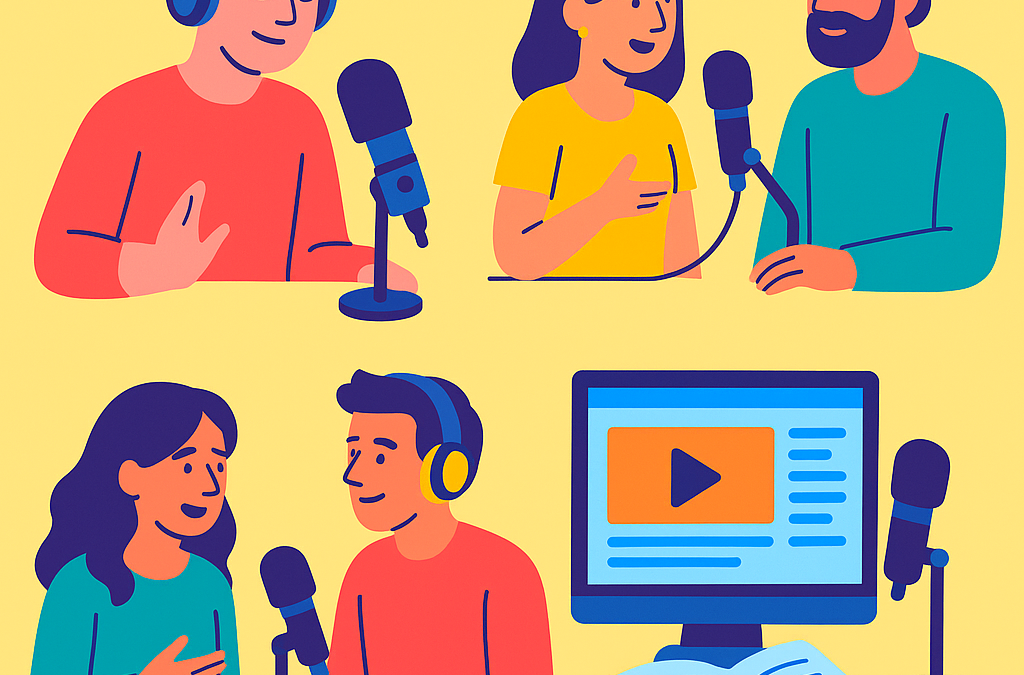Podcasting has become one of today’s most powerful tools for storytelling, education, entertainment, and community building. It’s a fun and effective way to reach your audience—delivered in a format they already enjoy. Podcasts are likely already a part of your listeners’ daily routines—now it’s time to make sure that podcast is yours.
Whether you’re an experienced host or just getting started, one of the most important decisions you’ll make is your podcast format. Think of it like a musician picking their genre—it sets the tone, structure, and style of the show. In this post, we’ll break down the most common formats, highlight pros and cons, and use real-world inspiration from The High Note Podcast to help you decide what works best for you.
Why Format Matters
Before you hit “record,” it’s essential to consider your podcast format. It shapes the listener experience, builds audience expectations, and affects your production process. Your format should align with your goals—whether you’re trying to grow an audience, showcase your expertise, or attract sponsors.
The format you choose also determines your workload, from scripting and editing to guest booking and publishing. Think of it as your podcast’s “genre”—it creates a vibe and consistency that brings listeners back for more.
Common Podcast Formats (and How to Use Them)
Interview-Based
One of the most popular formats, this involves interviewing guests like creators, experts, or influencers.
Pros: Fresh perspectives, easier content creation with guest contributions, credibility building, and networking opportunities.
Cons: Scheduling can be tricky, and quality can vary between episodes.
Solo Commentary (Monologue)
A single host speaks directly to the audience—sharing stories, commentary, reviews, or personal insights.
The High Note often uses this style in intros and recaps.
Pros: Total creative control, low production needs, great for personal branding.
Cons: Requires strong presence and storytelling skills to keep it engaging.
Co-Hosted
Two hosts share the mic and either discuss topics or conduct interviews together.
Pros: Built-in chemistry, dynamic dialogue, and shared workload.
Cons: Coordination challenges and potential for uneven participation.
Narrative/Storytelling
Scripted episodes with a clear arc—think true crime, documentaries, or fiction series.
Pros: Immersive, emotionally engaging, ideal for deep dives.
Cons: Time-intensive writing, editing, and production requirements.
Hybrid
Blends multiple formats, such as interviews with host commentary or narrative segments.
The High Note often uses this approach to mix artist interviews, host reflections, and music features.
Pros: Offers flexibility and variety.
Cons: Can be harder to maintain consistent structure or listener expectations.
How to Choose the Right Format
There’s no one-size-fits-all podcast format. It should reflect your brand’s voice, audience, and goals. At Sparkable, we help clients find a style that works with their strengths and supports long-term success.
Ask yourself:
- Do I thrive solo or in conversation?
- How much time and energy can I commit to production?
- Will I feature guests or keep it personal?
- Is my audience looking for entertainment, education, or both?
Final Thoughts
Like a musician refining their sound, podcasters often need time—and a little experimentation—to find the right format. The High Note Podcast has evolved over the years, and yours can too.
When your format aligns with your voice, audience, and mission—that’s when the real magic happens.


Recent Comments